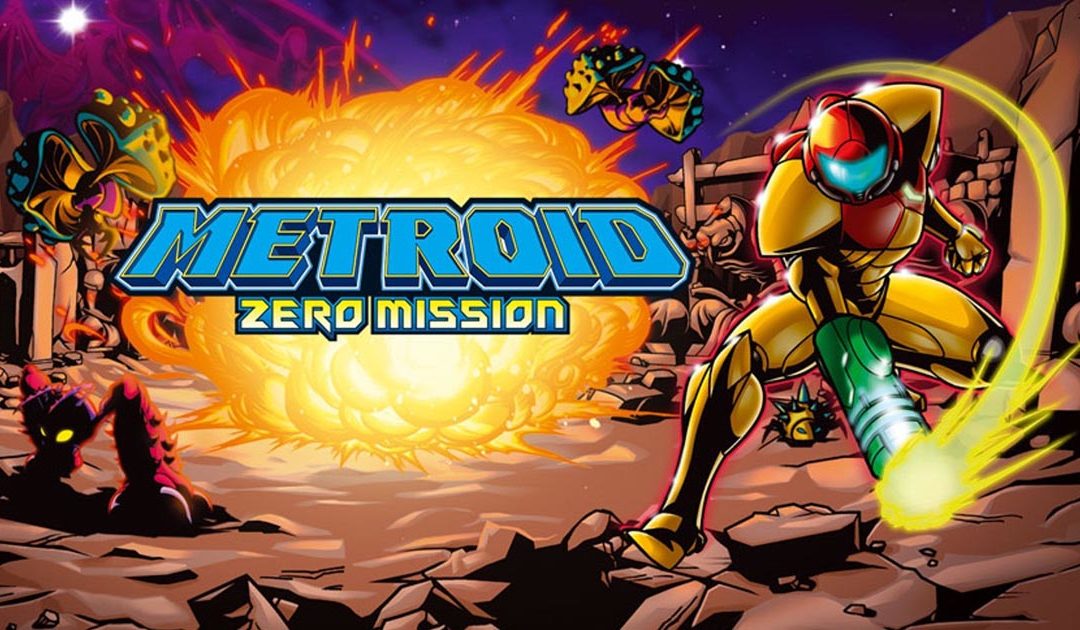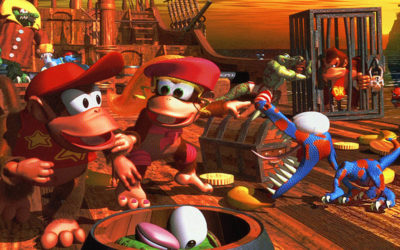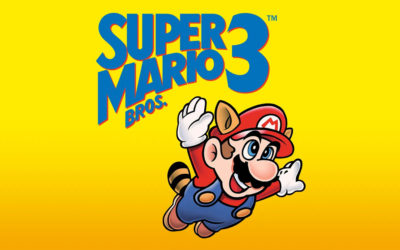Metroid: Zero Mission is a retelling of 1987’s original Metroid. I hate the original Metroid, but I love Metroid: Zero Mission. What improvements did it take to make this ground-breaking, genre-creating game go from something I could shrug off, to something I got excited to play for the third time?
“Still the Ultimate Space Adventure”
~Nintendo Power, referring to the first Metroid on the NES, circa 1991.
Before we talk about Metroid: Zero Mission, we need to talk about O.G. Metroid. I already gave the game some real shit, but hear me out. I don’t think Metroid is a bad game. I just personally dislike it. Let’s examine why.
Metroid – The Lonely Space Hunter with a Big Secret
Metroid was released for the NES in 1987. In the 8-bit hey-day, Metroid was cutting edge. The game was massive, the music was atmospheric and creepy, and the setup would inspire an entire genre called Metroidvania (a portmanteau of Metroid and Castlevania). A Metroidvania typically puts the player on a large, interconnected map. Often, the player isn’t given a whole lot of direction, but as they explore, they’ll discover areas that they cannot gain access to. As they progress, they’ll gain permanent power-ups, weapons, or abilities that will allow them to backtrack to earlier areas in the game to reach new places.
Metroidvanias usually feel vast, and non-linear, and promote exploration. The player needs to pay attention to environmental cues and obstacles so that they may come back with the appropriate capabilities later to further progress into the game.
In Metroid, you play as “Space Hunter” Samus Aran. Like most games of this era, you get most the story from the instruction booklet. Samus was sent on a mission to defeat the Space Pirates, led by a creature called Mother Brain. The Space Pirates stole a dangerous life form called a Metroid, and were trying to weaponize it. Your job was to infiltrate their massive, fortress-like cave on the planet Zebes, work your way down to Mother Brain, and destroy it.
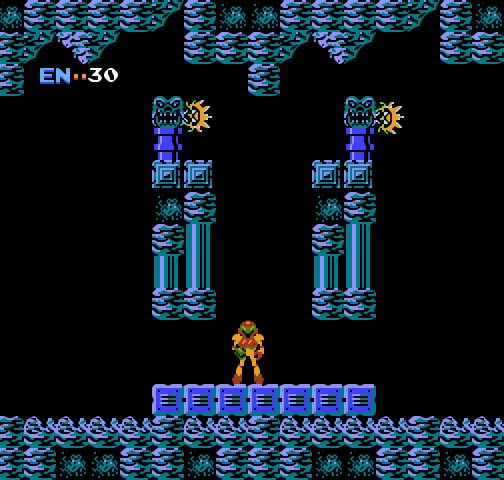
Straight forward enough, right? You work through this labyrinth, dispatching creepy creatures and hunting down better gear so you can advance your way to the end. You feel very alone and helpless. The ambiance is usually tense and foreboding. Players are left alone with Samus as they make their way through each area, backtracking when they get to a roadblock, gaining power-ups and new abilities, and gradually progressing deeper.
The game loses me due to a complete lack of hand-holding, slightly clumsy controls, and Aran’s inability to shoot at most of the enemies. Most creatures are half your height, and your shots coast above them. You can’t duck or aim downwards. Other creatures bound around in the air, but often they swoop in low enough that you can’t shoot them. Okay, so the game is telling me I should avoid enemies as opposed to dispatching them. That’s fine, but enemies have a small chance to drop health. You feel helpless in a lot of situations.
I don’t think this is a bad thing – the contrast between beginning-of-the-game Samus and end-of-the-game Samus is very stark. As you collect power-ups, you become an unstoppable killing machine armed with missiles, bombs, beams, and other new capabilities. Personally, I don’t have the patience to jog around long hallways and massive vertical chasms relying only on my memory to find spots I have yet to visit. If the first Metroid had a map or a slightly better way to discern one area over another, I’d be singing a much different tune.
Here’s the big kicker about the original Metroid. It comes with a huge twist at the end. If you beat the game fast enough, Samus Aran reveals one of the biggest video game secrets of the mid-80’s.
Samus Aran… is a laaayyyydeeeee!
This is no easy feat. Players will likely have to play the game a few times before they are familiar enough to finish the game fast enough to get this big reveal. This was a huge twist, considering it was the 80’s and most games focused on male protagonists that were saving damsels in distress. The marketing around the game never revealed this, and even the instruction booklet referred to Samus as a male all throughout. Kudos to Nintendo – you created the first badass video game heroine (unless you count Miss Pac-Man, who is actually, and quite clearly, the first trans video game hero).
Anyway, so that’s Metroid for the NES. Now let’s get on to the Metroid Zero Mission review.
Gameplay: 9/10
As mentioned, Metroid: Zero Mission is a retelling of Samus Aran’s first mission. It’s a more modern re-imagining of the first game. The general layout of the game is pretty similar, but it adds many quality-of-life features, several new areas, new bosses, and new upgrades and weapons.
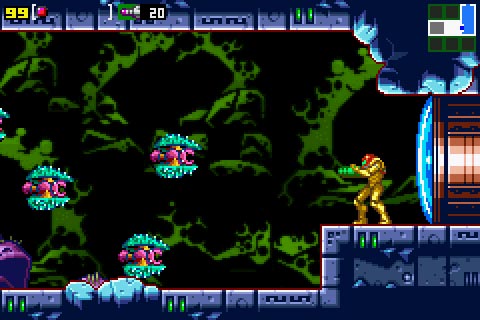
You make your way through the the underground maze, fighting your way past weird alien creatures, hunting down upgrades, and uncovering secret areas.
You are relatively powerless at the start, armed only with your arm cannon, which fires shots that only travel a few feet away from your face before disappearing. Eventually, you arm yourself to the teeth with additional armor, weapons, bombs, jumps, screw attacks, and a lot more.
Metroid: Zero Mission adds some upgrades that you would find in other games in the series, such as the ability to hop while in the morph ball (Samus can roll herself into a ball, I’m not sure if that was obvious or not). Additional hidden areas and secrets were added so you could utilize these abilities you didn’t have in the first game.
Zero Mission includes an entire epilogue that isn’t included in the original game, where Samus’s final escape from the planet doesn’t go so well. She gets shot down and has to infiltrate a space pirate ship without her famous power suit. This area utilizes a lot of simple stealth and hiding mechanics, and delivers that massively stark contrast between Samus at her best, and Samus at her most vulnerable.
Traversing through the labyrinths below the surface of Planet Zebes is really fun. Samus controls very well – her movement is snappy and responsive. She’s finally able to crotch and aim diagonally thanks to the Game Boy Advance’s shoulder buttons.
While the game is obviously mirrored after the original Metroid, the additional content and all of the quality-of-life features make it feel like a whole new game entirely.
Story: 8.5/10
The game starts out by Samus recalling her first mission – her “Zero” mission. She lands her gunship on the surface of Zebes – a nod to Super Metroid on the SNES, and starts the game in the same place the NES version does. Whereas the NES never attempts to tell us her story, Zero Mission gives us little pieces of the narrative as we make our way through the maze.
This is usually done when Samus uses an elevator. These futuristic lifts are used to take Samus from one region to another, and often, the first time you use a particular elevator, the game will play a short cutscene. Each only lasts a few seconds, but it reveals that Samus is being watched by Mother Brain, or that Ridley, the monster that canonically murdered her parents, is coming to Zebes.
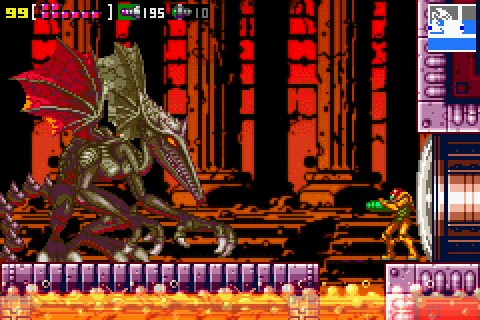
Towards the end of the game, during the epilogue, is when we learn a little bit more about Samus’s past. As she sneaks by the now lethal Space Pirates, she stumbles across a Chozo temple they are digging up. The Chozo are, again canonically, the ancient race of bird people who took Samus in when she was a little orphaned girl. They built the power suit for her. Throughout all Metroid games, many of your power-ups are held by ancient Chozo statues, as if they prophesied your return and your need.
Eventually, Samus uncovers a room filled with Chozo hieroglyphs. She’s faced with a trial, in the form of a boss fight, with a Chozo hologram. Once she succeeds, she’s granted all of her powers and capabilities, and oh boy, does Samus feel overpowered against the Space Pirates she had been running from moments before.
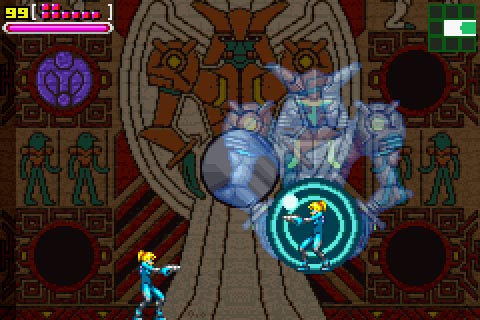
There is no dialogue or text to convey any of this. It’s told to you through gameplay, and through the tension, the player feels while making it through this area of the game. Going from suitless (or technically Zero Suit) Samus to a fully-armed, fully-upgraded tank, while her up-tempo theme song thumps, and her enemies trip over each other to run away is one of the greatest moments in any Metroid game.
Visuals: 8/10
Metroid: Zero Mission’s visuals work very well. I’ve always been impressed with what the Game Boy Advance can output, and obviously Nintendo would have the most mastery over it. The addition of more assets and backgrounds help you differentiate the different areas, which was something the original NES version so desperately needed. Samus, the enemies, and the bosses are all designed very well and look extremely clean and crisp.
If anything, the game is a little too bright and sterile. Whereas Super Metroid was dank, muddy, and gloomy, Metroid: Zero Mission feels a little more like an afterschool animated action series. I’m not going to demerit points for it, but I immediately played Super Metroid after Zero Mission, and it was one of the bigger things I noticed.
Let’s compared the original Metroid on the NES with Metroid Zero-Mission on the Game Boy Advance – I have the power to do that with my website. I am a God who has been granted too much power over the Universe. Behold!
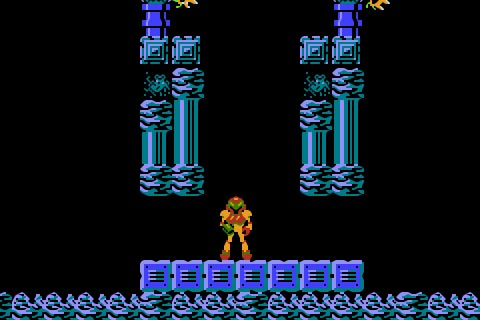

The game looks great. It still holds up today, and compared to the original Metroid, it will withstand the test of time. I just wish it was a little more artsy-fartsy like Super Metroid.
Audio: 7.5/10
Metroid has good audio for its time. Metroid: Zero Mission has good audio, considering it’s just a revamped version of Metroid. The same tunes are there but recomposed to sound less like they are coming out of a pocket calculator and more like they are coming out of a, well, Game Boy Advance. There’s nothing really wrong with the audio. In fact, with headphones, you get some nice stereo sound, and the game can optimize the output to give you a little boost in sound quality.
I feel like Nintendo took the safe route here, and could have done more with the audio. They could have had variations of each theme, or… something. I’m not complaining, but I long for more love to be put into these tracks. I know Nintendo’s team has the talent.
Accessibility: 9/10
If you are new to the Metroid series, Zero Mission is the best place to start. This actually leads to one of my gripes though. Remember when I was talking about the original Metroid on the NES not offering any sort of hand holding? Metroid: Zero Mission offers a little too much. It’s subtle, I guess. Some Chozo statues, including some that are literally sitting in your way, require you to plunk your morph ball butt into their cupped hands. They’ll reveal a spot on your map where you should go next.
This is nice for new players, but it feels a little more aggressive than it needs to be. A big part of Metroid is not knowing where to go. We have a map. That should be enough, right? On top of that, the map shows doors that haven’t been opened yet, and color codes them based on what you need to open them. I didn’t need some statue to tell me where to go. I would love to be able to turn these off.
Like most Nintendo games, Metroid: Zero Mission does a great job teaching you how to play the game without cramming a lot of conjecture down your throat. You get an upgrade, and in a few words, it tells you what you can do with it. Sometimes, an upgrade isn’t fully compatible with your suit, so you aren’t even told what it can do for you. It’s really fulfilling to figure out the mystery as you go.
Challenge: 8/10
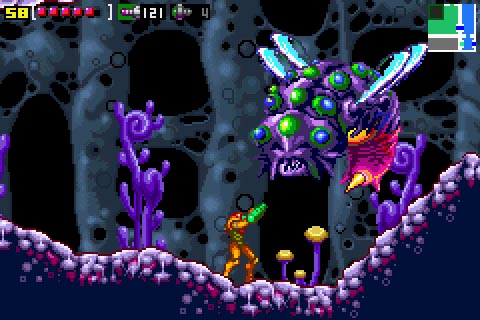
Metroid: Zero Mission is much easier than the game it grew from. The difficulty ramps up intentionally during the epilogue, where you are running for your life from aggressive Space Pirates. That said, once you establish their patterns, it isn’t really going to be a huge task. The area is also pretty forgiving, with a lot of save points.
The theme of a Metroid game isn’t to force players to pull out their hair; it’s about discovery and becoming better equipped and more powerful. That said, most bosses are defeated relatively quickly, with little fanfare. Other than the epilogue, the stakes always feel just a smidge too low. Even the final boss at the end of the epilogue is pretty basic and is finished off quickly.
It’s a weird balance. I don’t inherently enjoy games that are extremely difficult for the sake of being difficult, but when a game is a little too much of a cakewalk, I definitely feel it. Metroid: Zero Mission is dancing on that line.
Replayability: 8/10
Metroid: Zero Mission has a lot of hidden power-ups and upgrades to find. After completing it, the game will tell you how long you took, and what percentage of items you found. You are welcome to jump back in to hunt down everything, or start a new save file over to finish it as fast as you can.
Playing through the game is a joy, not a chore. Revisiting areas to track down hidden passageways and unopened doors is still fun after completing the story.
Gratification: 6.5/10
Similar to the NES version, it rewards the player with a different ending graphic of Samus. Do well enough, and she might show a little more. It’s an incentive that isn’t as gratifying as it used to be.
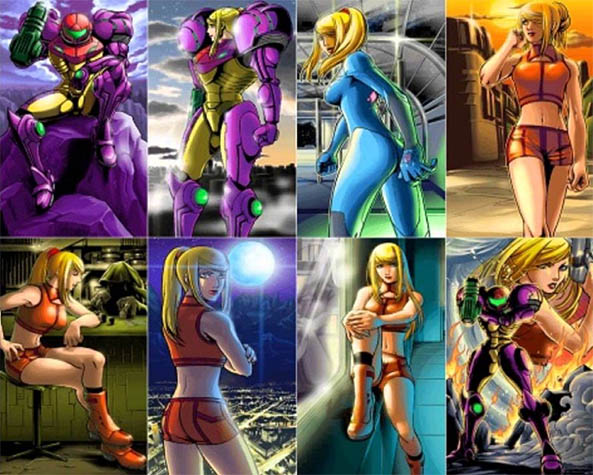
I mean, don’t get me wrong, Samus Aran is a badass hottie, and I’m all about keeping with traditions, but I feel like Nintendo could have done better. Offer more lore, some deeper backstory, or prepare the player for the next game chronologically in the series (Metroid Prime). Getting a face reveal at the end of Metroid Prime (sorry, spoilers) has more value because it’s the heroine’s first foray in 3D. I’m only stating this now in case someone calls me out on a future Metroid Prime review.
Personal Thoughts
I never had nostalgia for the Metroid series. My first experience with Metroid was playing Super Metroid on a kiosk at a KB Toys. My next experience would be years later, in Super Smash Bros. However, I eventually played Super Metroid, and fell in love with it, just in time for the Metroid Prime series to kick off on the Game Cube.
Metroid: Zero Mission was a fantastic look at where the series started, with all of the modern luxuries you’d want to make the experience enjoyable. Other than giving you a little too much direction, Metroid: Zero Mission is a fantastic re-imagining, especially if you are brand new to the series.
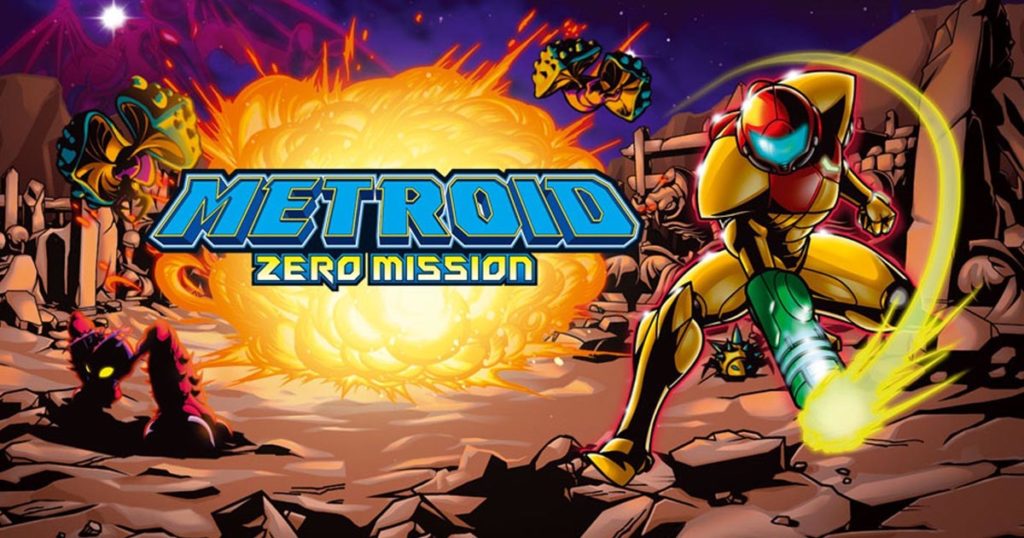
Metroid: Zero Mission was developed by Nintendo.
Metroid: Zero Mission is also available on the Game Boy Advance, as well as the Wii U Virtual Console. It’s a shame that it can’t be purchased on the Nintendo 3DS or Nintendo Switch.
Where to Get This Game:
Metroid: Zero Mission (GBA - 2004)
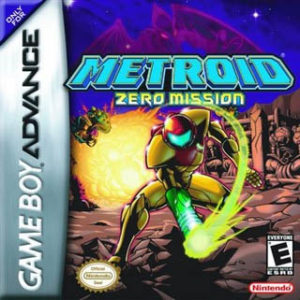
Game title: Metroid: Zero Mission
Game description: Metroid: Zero Mission was released in the United State in February 2004 for the Game Boy Advance, and later on the Wii U Virtual Console in 2016. Unfortunately, this game is not available on current-gen systems. It is a remake/re-imagining of Metroid for the Nintendo Entertainment System. Metroid: Zero Mission was very well-received, earning an 89/100 on Metacritic, and is regarded as being one of the must-have GBA titles.
Author: Nintendo
-
Gameplay - 9/10
9/10
-
Story - 8.5/10
8.5/10
-
Visuals - 8/10
8/10
-
Audio - 7.5/10
7.5/10
-
Accessibility - 9/10
9/10
-
Challenge - 8/10
8/10
-
Replayability - 8/10
8/10
-
Gratification - 6.5/10
6.5/10
Metroid: Zero Mission is Lynk Approved
If you’ve never played a Metroid game, Metroid: Zero Mission is the best place to start. If you have played other games in the series, do yourself a favor and go back to the series’ roots.
The game is well-balanced, if not a little too easy, but exploration and mastery of Samus Aran’s abilities and upgrades in order to collect every item in the game will keep veteran players busy for a while.
It’s a must-have for any Game Boy Advance aficionados, or for anyone who is a fan of the metroidvania genre. It is the game that started it all, just… better.
Pros
- It’s Metroid
- Lots of new content compared to the original
- Nice little story elements that don’t get in the way of gameplay
- Incredible epilogue with a great 180 at the end
- Samus has a nice butt
Cons
- The game tends to offer too much guidance as opposed to encouraging exploration
- Rewarding me with Samus Aran’s butt just isn’t as gratifying as Nintendo thought.

